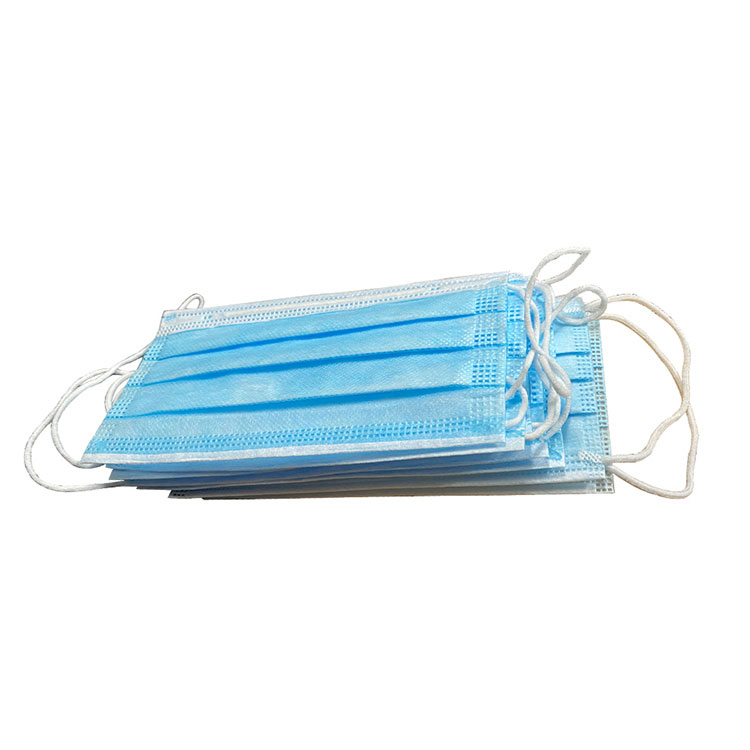Information about Anti-coronavirus Facial Masks
2024-07-28
Anti-coronavirus facial masks are designed to help reduce the spread of viruses, including the coronavirus (SARS-CoV-2), and protect the wearer from inhaling infectious droplets. These masks are essential in mitigating the spread of COVID-19 and other respiratory infections. Here’s a detailed overview of anti-coronavirus facial masks, including their types, features, and considerations:
Key Features:
1. Filtration Efficiency:
- High Filtration: Effective masks are designed to filter out particles and microorganisms. High-efficiency masks, such as N95 respirators, offer high filtration rates (at least 95% of airborne particles).
2. Material:
- Multi-Layer Construction: Masks typically feature multiple layers of fabric or non-woven materials to enhance filtration and protection.
- Antimicrobial Treatments: Some masks are treated with antimicrobial agents to inhibit the growth of microorganisms.
3. Fit and Comfort:
- Adjustable Straps: Many masks come with adjustable ear loops or head straps to ensure a secure fit.
- Nose Clips: Include adjustable nose clips or wires to conform to the shape of the nose, reducing air leaks.
4. Breathability:
- Ventilation: Designed to balance protection with breathability to ensure comfort during prolonged wear.
5. Certifications:
- Standards Compliance: Effective masks may comply with standards such as N95 (NIOSH-approved), FFP2, or KN95, depending on the region and type of mask.
Types of Masks:
1. Surgical Masks:
- Description: Disposable masks made of multiple layers of non-woven fabric.
- Features: Designed to protect against large droplets and splashes but offer limited protection against smaller airborne particles.
- Use: Commonly used in healthcare settings and by the general public for basic protection.
2. N95 Respirators:
- Description: High-filtration masks that provide a close fit and filter out at least 95% of airborne particles, including large droplets and small aerosols.
- Features: Designed for high-risk environments, including healthcare settings.
- Use: Used by healthcare professionals and in situations requiring high protection.
3. KN95 Masks:
- Description: Similar to N95 respirators but following Chinese standards. They offer comparable protection.
- Features: High filtration efficiency with a close fit.
- Use: Used in various settings, including workplaces and public spaces.
4. Cloth Masks:
- Description: Reusable masks made from fabric, often with multiple layers.
- Features: Can be washed and reused; effectiveness varies based on material and design.
- Use: Suitable for general public use, especially when high-efficiency masks are not available.
5. Face Shields:
- Description: Transparent plastic shields that cover the face from the forehead to below the chin.
- Features: Protects the face from droplets and provides an additional layer of protection.
- Use: Often used in conjunction with masks for additional protection.
Applications:
1. Healthcare:
- Protection: Used by healthcare workers to protect against exposure to respiratory droplets and aerosols.
2. Public Use:
- Mitigation: Worn by the general public to reduce the spread of the virus and protect others from potential exposure.
3. Workplaces:
- Safety: Used in various workplaces to maintain safety and health standards, especially in high-risk environments.
4. Travel:
- Prevention: Essential for travel, especially on public transportation or in crowded areas.
Benefits:
1. Infection Control:
- Prevention: Helps reduce the transmission of viruses and bacteria, protecting both the wearer and those around them.
2. Versatility:
- Multiple Uses: Suitable for various settings, including medical, public, and industrial environments.
3. Comfort:
- Design Options: Available in different styles and materials to suit different needs and preferences.
Considerations:
1. Fit and Seal:
- Proper Fit: Ensure the mask fits securely over the nose and mouth without gaps to maximize effectiveness.
2. Usage Duration:
- Replacement: Disposable masks should be replaced regularly, and reusable masks should be washed according to manufacturer instructions.
3. Compliance:
- Standards: Check for compliance with relevant health and safety standards to ensure effective protection.
4. Comfort:
- Breathability: Choose a mask that balances protection with comfort, especially for extended wear.
Usage Tips:
1. Proper Wear:
- Cover: Ensure the mask covers both the nose and mouth.
- Avoid Touching: Avoid touching the mask while wearing it and handle it by the straps when removing.
2. Disposal and Cleaning:
- Dispose: Dispose of single-use masks properly.
- Clean: Wash reusable masks regularly and follow care instructions.
Anti-coronavirus facial masks are a crucial tool in controlling the spread of COVID-19 and protecting individual health. By selecting the appropriate mask and using it correctly, you can contribute to a safer environment for yourself and others.



